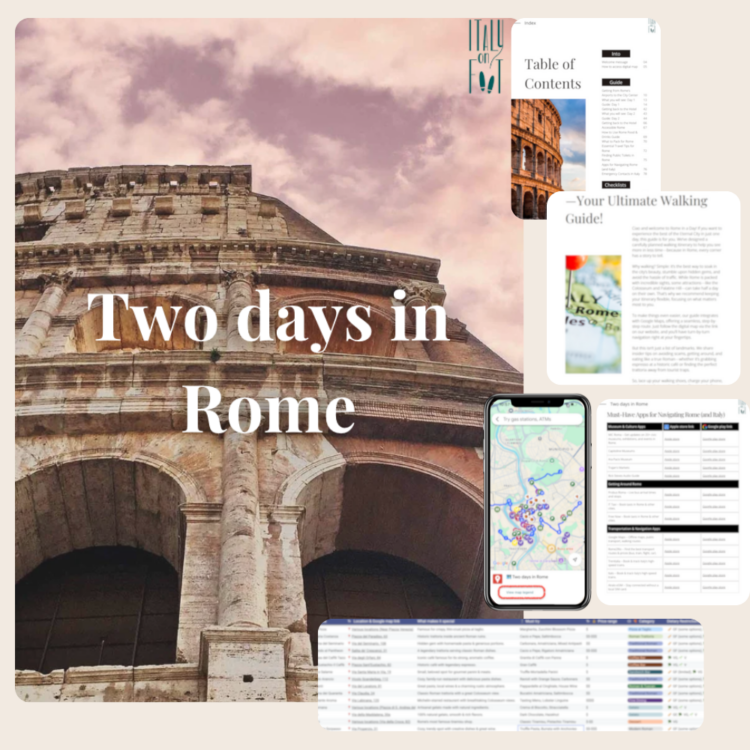Rome, the Eternal City, brimming with history and culture, offers endless experiences for travelers. Whether you’re marveling at ancient ruins or indulging in local cuisine, understanding the local customs can enrich your journey. One area that often confuses visitors is the tipping etiquette. Let me help you navigate through this with some insights and tips from a local perspective.

Understanding the Culture of Tipping in Rome
When you visit Rome, it’s crucial to understand that tipping isn’t as obligatory or as structured as it might be in other countries. The culture here is more relaxed, and tipping is generally viewed as a gesture of appreciation rather than an expectation. The first time I realized this was during a dinner with friends at a local trattoria. We enjoyed a delightful meal, and when it came time to pay, I hesitated, unsure of how much to tip. My Roman friend simply rounded up the bill, leaving a few extra euros. This approach seemed so natural, and over time, I’ve adopted it myself.
Dining out in a restaurant in Rome often involves leaving a tip of 10% or less. To make it easy, I usually just round up the total. For example, if the bill is €46.45, I’ll leave €50. It’s a straightforward way to show appreciation without going overboard. However, it’s important to know that if you see the term “servizio” on your check, it indicates that service has already been included, so no additional tip is necessary. Moreover, the term “coperto” is also common; this is a fee, usually ranging from one to five euros per person, that covers things like bread and olive oil served at the start of your meal. This fee does not cover a tip, so it’s good to be aware of the distinction.
Before you sit down for a meal, it’s always wise to check for these charges to avoid surprises when you get the bill. Knowing these little nuances helps in making the dining experience more pleasant and less stressful. For more details on how to navigate Rome, including dining tips, check out these Italy on foot travel tips.
Tipping at Cafés and Bars
When it comes to cafés and bars, the tipping etiquette in Rome is even more relaxed. Locals generally leave their extra change as a tip, and this is a practice I’ve found easy to adopt. Imagine you’re enjoying a cappuccino at a bustling Roman café. You’ve finished your drink and are ready to head out for more sightseeing. The bill is €2.80, and you leave €3.00. It’s a small gesture, but one that shows your appreciation for the service.
In bars, particularly those that are more laid-back, tipping isn’t expected. If you’re having a drink or two at a local bar and the service was friendly, leaving the change is perfectly fine. There’s no need to feel pressured to tip a specific percentage, as you might in some other parts of the world. This casual approach makes it easier for visitors to enjoy their time without worrying about cultural missteps. I remember my first time in a Roman bar; I was so concerned about how much to tip that I overthought the entire process. Now, it’s as simple as leaving some coins if I feel like it.
Hotels and Tipping
Staying at a hotel in Rome provides another opportunity to understand the local tipping customs. Whether you’re checking into a family-run guesthouse or a luxurious hotel, tipping is not as customary as it might be elsewhere. However, it’s always appreciated, especially for those who provide a personal service. For instance, if a porter assists with your luggage, a small tip of €1 to €2 per bag is a nice gesture. It’s not obligatory, but it shows gratitude for their help.
For housekeeping, leaving €1 to €2 per night is considerate, particularly if you’ve received excellent service during your stay. I usually leave the tip on the bed or on a table with a note marked “grazie” to make it clear that it’s meant for the housekeeper. For concierge services, tipping isn’t necessary, but if they go out of their way to secure a hard-to-get dinner reservation or provide detailed directions, a small tip of €5 to €10 is a generous way to acknowledge their effort.
These small considerations can enhance your hotel experience, making it more enjoyable and personalized. The key is to tip according to the level of service you feel you’ve received, without feeling obligated to meet any set standard. This flexibility is one of the aspects of Roman hospitality that I truly appreciate.
Taxis and Transportation
Using taxis and other transportation services in Rome also comes with its own set of tipping norms. Generally, taxi drivers do not expect tips, but rounding up to the nearest euro is quite common. For example, if your fare is €19.50, you might hand over €20 and tell the driver to keep the change. This is a simple way of expressing appreciation for a smooth ride, and it’s something I do regularly.
When it comes to hired drivers or car services, tipping is more common, especially if the service is exceptional. A tip of around 10% is a nice way to show your gratitude for their professionalism and punctuality. I remember once having a driver who went above and beyond to avoid traffic jams and get me to a meeting on time. In such cases, tipping becomes a small way to acknowledge their effort.
For those using ride-sharing apps, tipping is integrated into the app itself, making it convenient to add a little extra for good service. Again, the amount is up to you and is generally not mandatory. The transport system in Rome is quite efficient, and the drivers are usually friendly and helpful, making even short rides enjoyable.
Tour Guides and Special Services
When you’re exploring the historic sites and cultural landmarks of Rome, you might find yourself relying on the expertise of a tour guide. Tipping your guide can be a lovely way to thank them for their knowledge and passion. A rule of thumb is to tip about €5 to €10 per person for a short tour, and a bit more for a full-day tour. I have often been on tours where the guide’s enthusiasm and depth of knowledge genuinely enhanced my experience, and leaving a tip felt like the least I could do.
For specialized services, such as private tours or exclusive experiences, tipping is often more generous. In these cases, around 10% to 15% of the cost of the tour is appreciated. The level of service is typically exceptional, and the personal touch makes it worthwhile to show your appreciation with a higher tip. It’s about recognizing the effort that goes into creating a memorable experience for you.
In the realm of special services, such as personal shoppers or chefs offering private cooking classes, tipping is not a strict requirement but certainly welcomed. In these scenarios, tips are a way to express your satisfaction and gratitude for a unique experience tailored to your interests. The tipping norms in Rome are flexible but knowing them helps ensure that your gratitude is communicated effectively.
Practical Tips for Visitors
While tipping in Rome isn’t a strict rule, it’s always good to carry some cash, particularly small denominations, for those moments when you feel like showing appreciation. Credit card machines may not always have the option to add a tip, especially in smaller establishments. I always keep a few coins or small bills handy, just in case.
Remember to check your bill for any included charges like “servizio” and “coperto” before deciding on a tip. This way, you can ensure that you’re not tipping unnecessarily. A little awareness goes a long way in avoiding confusion and ensuring that your dining experience remains pleasant.
Ultimately, tipping in Rome is less about following a strict code and more about personal choice. It’s about expressing gratitude in a manner that feels comfortable and appropriate for you. By understanding the local customs, you can relax and enjoy your time in this beautiful city without worrying about making a faux pas. Enjoy the rich culture, savor the delicious food, and let the warmth of Rome’s hospitality enhance your visit.



